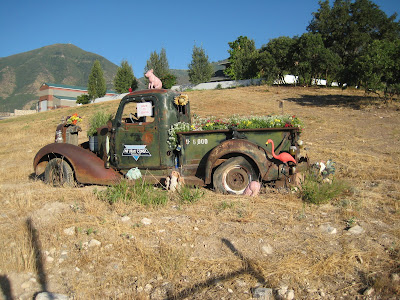
Ben Abbott, my son, is currently doing Ph.D. work at the University of Alaska, Fairbanks. The photo of him was taken while he was working at the Toolik Field Station north of the Brooks Range in Alaska. I asked him about interdisciplinary aspects of the project he's involved in. Here's his answer:
Interdisciplinary work is essential to doing good science. None of us studies everything. The various fields of knowing have expanded and deepened to the point that no one is capable of mastering all of the current unfoldings and discoveries. Luckily, collaboration is possible. When numerous researchers examine a new question a more complete understanding is attainable. As an ecologist, I study the interactions between the living (biotic) and non‑ living (abiotic) systems of earth. Right now I'm looking at the causes, extent, and effects of sinkholes, called thermokarsts, which have been melting more and more frequently in the permafrost on the North Slope. There are 13 principle investigators (big bosses) and 20 graduate students working on this project. Each researcher has a specialty or emphasis depending on their interests and background. The first challenge we're dealing with is generating compelling and powerful questions. Why are these features forming where they are forming? How are they changing the vegetation? What is being released from the sinkholes? Not only does each
researcher's background determine what parts of which questions he or she can work on, it influences the very questions they are capable of generating. I didn't think to ask, "how deep does the thermokarst disturbance extend into the soil and underlying material," though, once that question was posed by one of the geomorphologists in the group, I immediately recognized its importance to understanding the system as a whole.
One possible complication in assembling an "interdisciplinary" team is the trouble of finding people of truly different disciplines. Many times the fields or disciplines that are brought together have shared roots. This facilitates communication and consensus but it also propagates prejudice and potential bias. For example, though I feel the team working on this thermokarst project is wildly diverse, a non‑ scientist might well consider us completely homogeneous. I mean what I see as interdisciplinary‑‑ gelogists, ecologists (of the terrestrial, aquatic and community varieties), climatologists, hydrologists etc.‑‑ may seem totally one sided to an outsider. Indeed, we all share some basic assumptions about how to uncover truths. There are a couple collaborators with more distant relations to the physical scientists, one of whom is an anthropologist interviewing native populations about their understanding of the frequency, importance, and duration of these features. There has only been one field season of data collection so far so it is still to be seen if there will be real dialogue and collaboration between the physical scientists and the cultural scientists. I'm excited to see how much "inter" and how much "discipline"for that matter there will be in this project.






